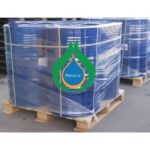While most of calcium chloride‘s food uses are for preservative and texture purposes, it does provide health benefits in one use: sports drinks. In these, calcium chloride is one of several ingredients that act as electrolytes, ions that conduct electrical activity and help your body maintain fluid balance as well as proper muscle and nerve functions, according to the American Council on Exercise. As an electrolyte, calcium helps maintain bone health and prevent muscle spasms, and chloride helps keep your heartbeat regular.
Even though calcium chloride is not a substance you need to monitor closely for health reasons — it’s the sodium, not the chloride, in table salt that leads to high blood pressure — it still might impact your cooking.
The ACE recommends drinking a sports drink with electrolytes before exercise sessions lasting longer than an hour.
For example, when making a tomato sauce, the Food Network recommends avoiding diced canned tomatoes with calcium chloride added as a firming agent. The substance will prevent the tomatoes from breaking down during preparation, leading to a lumpier sauce.
Treating haul roads with calcium chloride can be accomplished with existing equipment in almost all cases. General application recommendations are outlined below.
1. Scarify the road to a depth of 3 to 5 inches.
2. Apply LIQUIDOW calcium chloride (30 or 32% solution) to the surface in two or three passes of the water wagon. The total application rate should be between 0.6 – 1.0 gallons per square yard. The amount of DOWFLAKE XTRA equivalent to 0.6 – 1.0 gallons of LIQUIDOW is 2.75 – 5.06 lbs. The preferred application method for treatment with liquid calcium chloride is to windrow the soil after each pass to spread it across the road surface and obtain thorough mixing. A grader is most commonly used to scarify and windrow.
3. Blade the surface to a modified “A” crown to allow water to drain. (In some severe cases, top dressing with approximately 0.1 gallons per square yard of 30 or 32% LIQUIDOW, or equivalent, may be desired.)
4. If available, it is advisable to compact the road surface with a roller, sheepsfoot or other compacting machinery.
Booster applications are recommended every 8-12 weeks or as needed at a rate of 0.2 – 0.3 gallons per square foot.
Another way calcium chloride helps maintain haul roads to minimize lost time is through snow and ice control in winter.
Calcium chlorides urge to return, or remain in its natural liquid state and the fact that it gives off heat as it does so are the properties that make it the most effective deicing material available. Most often, as calcium chloride is used as the highly-concentrated additive to rock salt or abrasives (sand and cinders) to achieve the most economical mix.
Calcium chloride/salt mixtures
When used with salt, calcium chloride serves to make this very inexpensive material work faster and at lower temperatures than it can alone. Whereas salt must be in contact with moisture before it can begin deicing, calcium chloride absorbs moisture from the air so it becomes an effective deicing brine more quickly. Salt is practically effective only down to about 20°F (-6.7°C), while calcium chloride melts at temperatures as low as -30°F (-34.4°C). The result is a deicing combination that’s effective more quickly; that remains effective over a wider temperature range; and that keeps total deicer costs down because less material is needed overall.
Besides the major applications for calcium chloride outlined in the previous pages, there are a number of other areas where this material’s unique properties are put to use. The following are some examples:




